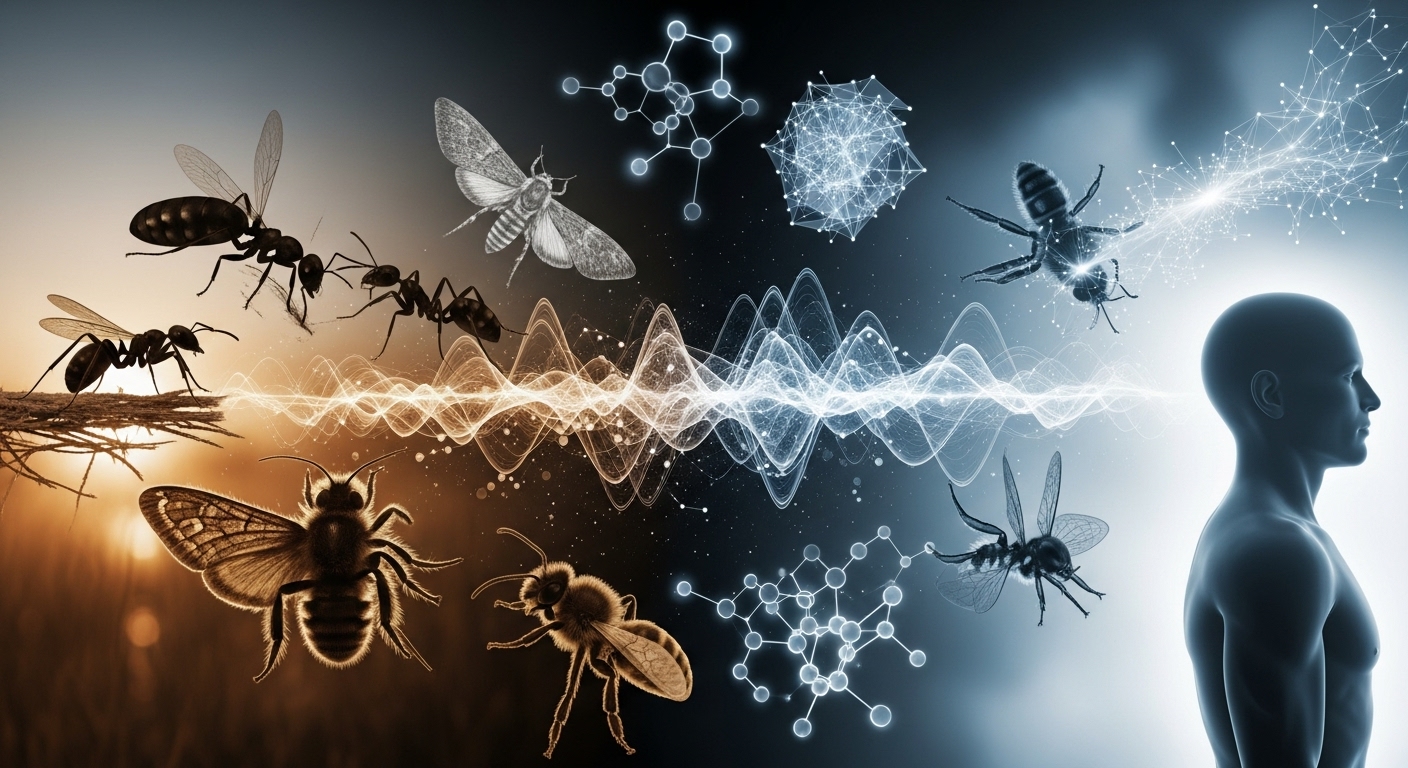Introduction: The Unseen World of Chemical Communication
Long before the first word was spoken, life communicated through a silent, invisible language: chemistry. Across the animal kingdom, organisms release and receive chemical signals that govern the most fundamental aspects of their existence, from finding a mate to warning of danger.[1], [2] These powerful messengers are known as pheromones. This guide will explore the foundational science of pheromones, from their discovery to their diverse roles in nature, providing the scientific bedrock for understanding this fascinating field.
The Discovery of a Chemical Language
While ancient Greeks observed that female dogs in heat could mysteriously attract males from great distances, the formal scientific journey into this chemical world began in the 20th century.[3]
In 1959, scientists Peter Karlson and Martin Lüscher coined the term “pheromone” from the Greek words pherein (to transfer) and hormōn (to excite).[4], [1], [5], [6] They defined it as a substance “secreted to the outside by an individual and received by a second individual of the same species, in which they release a specific reaction, for example, a definite behavior or a developmental process”.[5], [7], [8], [3] This definition crucially distinguishes pheromones from hormones, which work internally within a single individual.[7], [9], [10]
At the same time, after two decades of work, German biochemist Adolf Butenandt identified the very first pheromone.[3], [11] By processing the scent glands of over 300,000 female silk moths, his team isolated a tiny amount of a potent sex attractant they named bombykol.[8], [3] This landmark achievement provided the first concrete proof that a single molecule could trigger a powerful, predictable behavior in another animal.[3], [11]
The Pheromone Lexicon: A Functional Classification
Scientists classify pheromones based on the responses they elicit. There are four main types [7], [10]:
- Releaser Pheromones: These trigger an immediate and specific behavioral response.[7], [12], [13] A classic example is an alarm pheromone released by an ant or bee, which causes nestmates to instantly become aggressive or flee from danger.[3], [14], [13]
- Primer Pheromones: These cause slower, long-term physiological changes rather than an immediate behavior shift.[7], [12] In a honey bee colony, the queen produces a primer pheromone that suppresses the reproductive development of the worker bees, ensuring she remains the sole egg-layer.[15]
- Signaler Pheromones: These act as a chemical business card, providing information about the sender, such as their identity, health, or social status.[7]
- Modulator Pheromones: These can alter or synchronize bodily functions and are often studied for their effects on mood and emotion.[7]
Masters of Scent: Pheromones in the Animal Kingdom
The most undeniable evidence for the power of pheromones comes from the insect world, where they orchestrate complex societies and reproductive strategies.[16], [2], [17], [18]
Ants: Architects of a Scented Society
Ant colonies are managed almost entirely through a sophisticated chemical language.[19]
- Trail Pheromones: When a forager finds food, it lays down a trail pheromone on its return to the nest. This chemical highway guides other workers directly to the source.[1], [16], [13]
- Alarm Pheromones: When threatened, ants release alarm pheromones that can trigger a range of behaviors from frantic escape to mass aggression, recruiting more soldiers to a fight.[3], [14], [13]
Moths: Masters of Long-Distance Romance
Moths provide the quintessential example of sex pheromones. A female silk moth releases bombykol to signal she is ready to mate.[11], [20] Male moths, with their large, feathery antennae, can detect just a few molecules of this pheromone from over a mile away and fly upwind to find her.[1], [20] This system is so effective that synthetic versions of moth pheromones are used in agriculture to disrupt mating cycles and control pests, a testament to their real-world power.[3], [21], [22]
Bees: A Monarchy Ruled by Chemistry
The social order of a honey bee hive is maintained by the Queen Mandibular Pheromone (QMP).[1], [15] This complex chemical blend, produced only by the queen, is passed among workers and has multiple effects: it prevents workers from reproducing, attracts them to care for the queen, and maintains overall colony cohesion.[15], [1]
Mammals: Complex Chemical Conversations
Mammals also use pheromones for a wide range of social behaviors, including territorial marking and reproduction.[7], [23] For instance, female Asian elephants release a specific pheromone, (Z)-7-dodecen-1-yl acetate, in their urine as they approach ovulation to signal their receptive state to males.[24], [25], [26]
References
- themarginalian.org
- uaex.uada.edu
- pnas.org
- farmonaut.com
- mdpi.com
- schal-lab.cals.ncsu.edu
- themarginalian.org
- ovid.com
- americanscientist.org
- facetsjournal.com
- bio.kuleuven.be
- frontiersin.org
- mdpi.com
- researchgate.net
- pnas.org
- brucealberts.ucsf.edu
- conservationevidence.com
- americanscientist.org
- frontiersin.org
- saspublishers.com
- researchgate.net
- drkilligans.com
- jabonline.in
- researchgate.net
- greekerthanthegreeks.com
- healthline.com
- youtube.com
- medicalnewstoday.com
- ncbi.nlm.nih.gov

